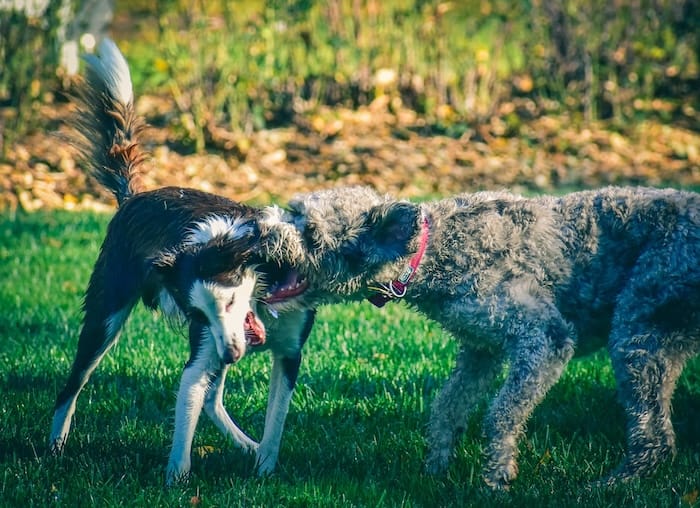As a dog owner, one of your primary responsibilities is ensuring the safety and well-being of those around your furry friend. While dogs are often considered to be loving companions, any dog, regardless of breed or size, has the potential to bite under certain circumstances. Fortunately, with proper training and guidance, you can significantly reduce the risk of your dog biting someone. Here are some effective training tips to help you prevent your dog from biting people.

Seek Professional Help
If your dog’s aggression is severe or you’re struggling to manage their behavior, seek help from a professional dog trainer or behaviorist. They can assess your dog’s behavior, provide personalized training plans, and offer guidance on how to manage aggression effectively. An attorney from ltlaw can additionally help you in case you are facing legal issues due to your dog’s biting incidents, such as a personal injury claim or a lawsuit filed by someone who was bitten. They can provide legal guidance, represent you in court, and help you navigate the complex legal process to ensure your rights are protected and you receive fair treatment. Remember, it’s okay to ask for help, and seeking professional assistance can make a significant difference in your dog’s behavior.
Understand Your Dog’s Body Language
Dogs communicate primarily through body language, and being able to recognize the signs of stress, fear, or aggression in your dog is crucial for preventing biting incidents. Some common signs that your dog may be feeling uncomfortable or threatened include growling, baring teeth, stiffening of the body, raised hackles, and avoiding eye contact. By understanding your dog’s body language, you can intervene before a situation escalates and prevent a potential bite.
- Learn to Recognize Stress Signals: Dogs exhibit a range of stress signals, such as yawning, lip licking, and panting when they’re feeling anxious or uncomfortable. Recognizing these subtle signs can help you intervene before the situation escalates.
- Observe Context and Environment: Pay attention to the context and environment in which your dog is exhibiting these behaviors. For example, if your dog growls when approached while eating, they may be exhibiting resource-guarding behavior. Understanding the triggers and context can help you address the root cause of the aggression.
- Avoid Punishment: Avoid using punishment or harsh corrections when your dog exhibits aggressive behavior. This can increase fear and anxiety and make the aggression worse. Instead, focus on positive reinforcement training and addressing the underlying issues that are causing the aggression.
Socialize Your Dog
Proper socialization plays a vital role in shaping your dog’s behavior and temperament. Exposing your dog to various people, animals, environments, and situations from a young age helps them become well-adjusted and confident.
Socialization teaches dogs how to interact appropriately with others and reduces the likelihood of fear-based aggression. When socializing your dog, ensure that the experiences are positive and rewarding, using treats, praise, and toys to reinforce good behavior.
Understanding Breed-Specific Behaviors
Different breeds have varying temperaments and behaviors, which can influence their likelihood of biting. For example, certain breeds, like terriers or herding dogs, may have a natural inclination to nip or bite as part of their instinctive behaviors.
Understanding these breed-specific behaviors can help you anticipate and manage your dog’s behavior more effectively. Research your dog’s breed and consider consulting with a professional trainer or behaviorist who specializes in that breed for personalized guidance.
Managing Aggression Through Training
If your dog exhibits aggressive behavior, it’s important to address it promptly and effectively. Seek the help of a professional dog trainer or behaviorist who can assess the underlying causes of your dog’s aggression and provide a tailored training plan. This may include desensitization and counterconditioning techniques, which involve gradually exposing your dog to the trigger of their aggression in a controlled and positive manner.
Positive Reinforcement Training
Positive reinforcement training is a highly effective method for teaching your dog desired behaviors and discouraging undesirable ones without the use of force or intimidation. Rewarding your dog with treats, praise, or play when they exhibit behaviors you want to encourage, such as sitting calmly when greeting visitors, reinforces those behaviors and encourages them to repeat them in the future. Conversely, ignoring or redirecting unwanted behaviors, such as jumping or nipping, communicates to your dog that those actions won’t result in attention or rewards.
- Consistency is Key: Consistency is crucial in positive reinforcement training. Be clear and consistent in your commands and expectations, and ensure that everyone in your household uses the same cues and rewards. This helps your dog understand what is expected of them and reinforces their learning.
- Timing is Important: Timing is also critical in positive reinforcement training. Reward your dog immediately after they exhibit the desired behavior to reinforce the connection between the behavior and the reward. Delayed rewards can confuse your dog and make it harder for them to understand what they are being rewarded for.
- Gradually Increase Difficulty: As your dog becomes more proficient in a behavior, gradually increase the difficulty by adding distractions or increasing the duration or distance of the behavior. This helps to generalize the behavior in different contexts and ensures that your dog can perform the behavior reliably in various situations.
Be a Responsible Owner
As a dog owner, you have a responsibility to ensure the safety of others around your pet. This includes following leash laws, properly training and socializing your dog, and being mindful of their behavior in public settings. If your dog has a history of aggression, consider using a muzzle or other safety measures to prevent bites. Additionally, make sure your dog is up-to-date on vaccinations and regularly visits the vet to address any health concerns that may contribute to aggression.

By recognizing the root causes of biting, socializing your dog, teaching bite inhibition, avoiding triggers, seeking professional help when needed, and being a responsible owner, you can help your dog become a well-behaved and safe companion. Remember, training is an ongoing process, and it’s important to remain consistent and patient with your dog. With the right approach and dedication, you can prevent your dog from biting and ensure the safety of those around them.
